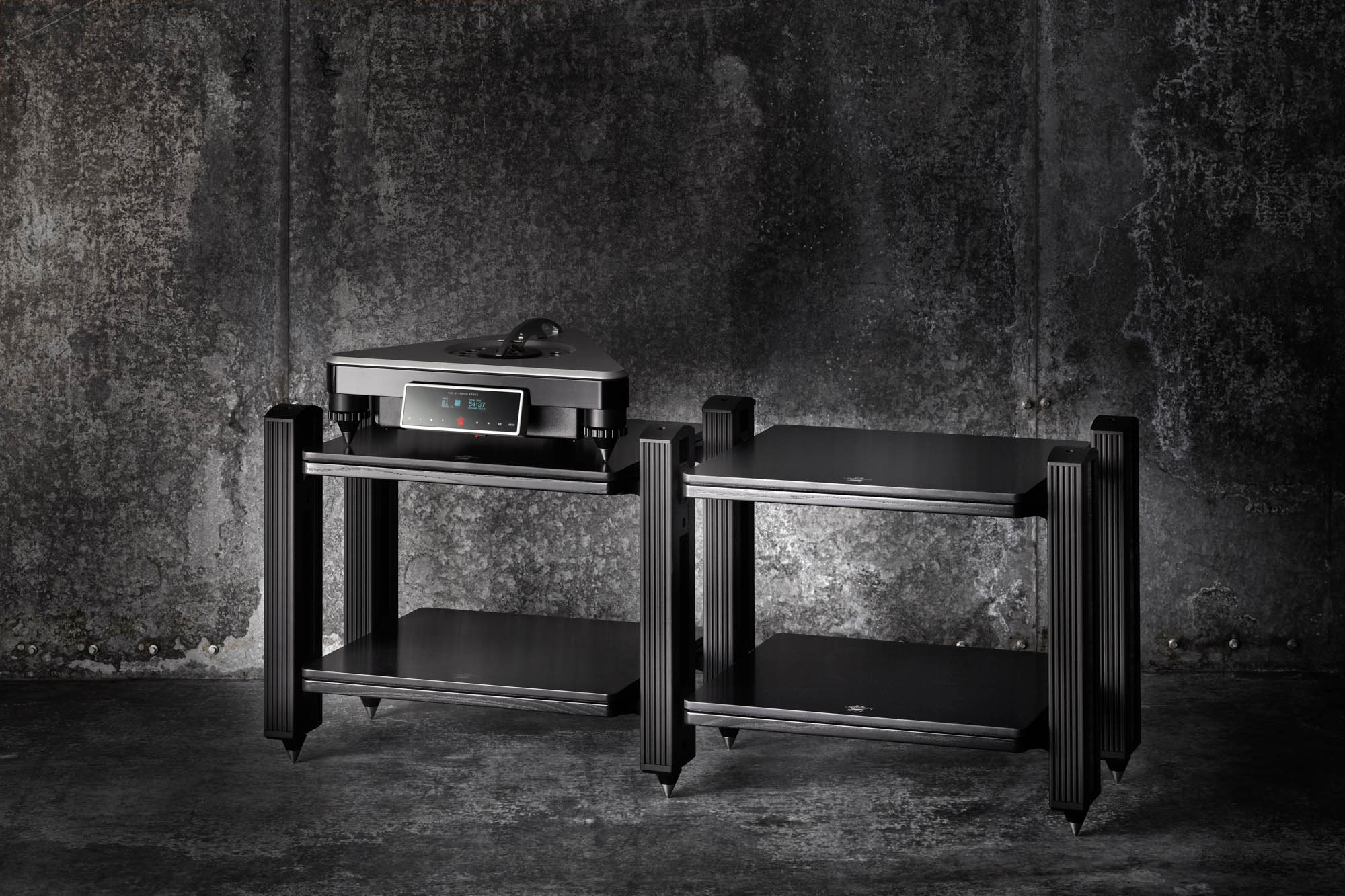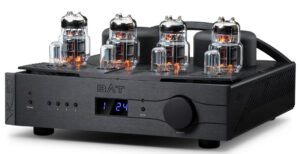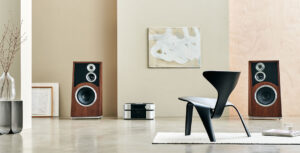
Some parts of your system that are somehow inherently less sexy than those big boxes or spinning platters – and chief amongst them is probably your rack. It’s not that what supports your equipment doesn’t matter or make a difference. I’d argue quite the opposite, with many an audiophile underestimating the importance of and under-investing in their system’s supports. It’s just that most of us simply want to make a one-time decision, preferably without spending too much time on it. Instead, we can get on with the serious business of listening to music whilst angst-ing about whether that new pre-amp you just read about would be the answer to all your system’s woes? Oddly enough, very few of us ever stop to consider that a decent rack might just answer a whole host of questions – but then I guess that’s my point.
Take that mindset a bit further, and it’s not hard to extrapolate an almost tick-box list of the desirable attributes required by any serious audio rack – before you even get to its sonic contribution. It needs to be sturdy enough to support increasingly heavy components (just in case we ever manage to afford those monster amps we really, really want). It needs to be adjustable/configurable (to make space for those monster amps we really, really want). It should be modular (just in case those monster amp are mono-blocs) and it should look good loaded with audio equipment. It’s incredible how many racks fail on this last criterion. They might look great when you see them empty but pack them with audio equipment, and they don’t look as good. The same applies to modularity and adjustability: changing stuff about in theory isn’t the same as actually doing it in practice. All too often it’s a case of fiddle and faff to get the thing put together and then leave well alone. I’ve often wondered whether the Quadraspire racks’ longevity owes as much to the fact that they work (in the mechanical sense) as it does to their sonic virtues.

Of course, the bigger and heavier the equipment you make, the more pressure it exerts on your support solution (literally and figuratively). So perhaps it should come as no surprise that those practised purveyors of hideously heavy amplifiers, Gryphon Audio Design, have finally turned their attention to creating a rack system capable of accommodating, well… those monster amps that we all really, really want. Nor perhaps should it be any surprise, given that the company seems to be on something of a new product roll right now, that the rack they’ve come up with doesn’t just tick all the boxes, it does it in bold after adding a few extra boxes of its own. When you build something like the Mephisto – an amplifier that would bring the average audio rack out in a cold, shivering sweat – it tends to help you focus on the priorities.
On the face of it, there’s nothing obviously different or unique about the Gryphon StandArt racks – other than the unmistakably Gryphon aesthetics that is – although even those are sufficiently self-effacing to complement any number of different components. Which brings me to my first point: built by Gryphon and intended for use with its electronics, the StandArt racks work equally well (sonically and aesthetically) with boxes that come from other manufacturers – and work they do! Consisting of two main elements – support shelves, complete with massive angle brackets and the legs to which they attach – you can specify height, the number of shelves and how many bays you want.
Each upright is available in one of four heights, including short ones to suit amp stands. The uprights themselves are formed out of a figure-eight (or waisted oblong to be more accurate) aluminium extrusion, the central ‘bridge’ adding stiffness and creating two separate cells within each leg. The rebated middle section is drilled with a ladder of holes to allow users to select shelf spacing, either on one side or both, depending on whether it’s an ‘end leg’ or ‘Extension leg’. It’s a simple, elegant solution that means you can go on building sideways until your space or budget runs out. Add to that the fact that the shelf brackets are butch enough offer enough mating area and fixing bolts and lock securely into the groove in the leg and the result is a flat-pack rack that builds into the sort of massively rigid structure more normally found bolted to reinforced concrete foundations. But then, once you’ve built even a modestly sized rack, the differing grades of kiln-dried sand that fill each hollow in all four uprights make it feel like its bolted down anyway. For once the sand doesn’t leak and the large composite cones on which the rack stands make levelling it and locking it in place a straightforward process.

The shelves themselves are deceptively simple constrained layer designs, depending for their performance on carefully chosen and combined materials. The top surface is a layer of Kerrock acrylic resin/mineral composite material, bonded to a thicker substrate of HDF, using bitumen-based damping compound between the two. The result is a shelf that’s thin enough to be practical, stiff enough to support any amplifier known to man (yes – even the Mephisto) and handy when it comes to sinking and dissipating the mechanical energy generated by the supported components. The rigid upper surface offers an ideal interface for coupling elements that will further increase the stand’s efficacy. Residual low-frequency energy passes into the legs, and those sand-filled cavities do the rest. Simple, effective, massively rigid, easy to assemble or reassemble and suitably understated, the Gryphon StandArt certainly lives up to its name. But where things get impressive is once you put your system on the rack and fire it up.
One of the occupational hazards of the otherwise charmed life of a reviewer is the amount of time you devote to arcane activities like listening to racks. It’s an involved and far from a straightforward operation. Still, you quickly establish that not only do equipment supports make a musically significant difference, but each rack brings its own particular mix of attributes to the party. Over the years I’ve gravitated towards the warmth, stability and dimensionality of the HRS RSR and the clarity, neutrality and resolution of the Grand Prix Monaco/Monza. There are plenty of racks that cost more, but few deliver more balanced or consistent musical results. However, the Gryphon is one that does.
Place a component you know well on or in the StandArt, and it simply sounds more like itself. Of course, that might be good or bad, but it’s hard to ignore the simple truth that the Gryphon rack is letting you hear more of (or more about) the products it supports than it intrudes itself. Install your whole system, and the StandArt goes a long way towards reminding you just why you bought each of those components and the system as a whole. The sound comes up fresh and direct, expressive and communicative – just like somebody opened the musical taps. The combination of unforced clarity and musical organisation, rhythmic flexibility and dynamic shading combine to free the music from the system producing it. The stand also eliminates the thickened low-frequency fog belts or etched transparency, smeared harmonics and collapsed tonality that seems to afflict all but the best equipment supports. Instead, the Gryphon rack succeeds in eradicating its contribution, both on a macro and equipment interface. It’s effective at draining away energy generated within your components, and it achieves that without falling prey to an overall resonant signature of its own.
Practically speaking, at 498 × 448mm the StandArt’s shelves might be considered small, although they’re large enough for most purposes, even the deep chassis dimensions of CH Precision components. Overall I’d describe them as nicely judged, with a depth dimension that helps maintain an overall compact footprint. Gryphon offers a couple of larger shelves for bigger units to suit either their Antileon Evo or Mephisto amps, so one of those should suffice. Meanwhile, even a fully loaded four-shelf unit over a metre tall retains the outstanding, planted rigidity characterising the range.

For once, the simple solution is also the one that works. If the perfect rack is one that can be seen but not heard, then the Gryphon StandArt is getting pretty darned close to that ideal. Add to that it’s practicality, sound engineering, robust construction and resilient materials and you’ve got the promise of serious longevity, both in terms of its adaptability and its overall appearance. If you want a rack that’s truly fit and forget, then look no further. If you want a rack that’ll make the most of your system, then this is it. And if you want a rack that does all that and looks great doing it, the Gryphon StandArt does exactly what it says on the tin: It comes from Gryphon, it’s a stand, and it’s a work of art, functionally and musically!
TECHNICAL SPECIFICATIONS
- Type: High-mass component stand
- Shelf Construction: Kerrock/HDF constrained layer
- Uprights: Double cell aluminium, sand filled
- Shelf Dimensions (W×D): 498 x 448mm
- Heights: 548mm, 800mm or 1124mm
- Finish: Graphite/Black
- Prices: Amp stand £3,350-£3,850
StandArt Racks £5,900 (two shelf 548)-£18,750 (twin four shelf 1024)
Manufacturer: Gryphon Audio Designs
URL: gryphon-audio.com
Tel: +45 8689 1200
Tags: GRYPHON RACK SYSTEM STANDART
By Roy Gregory
More articles from this authorRead Next From Review
See all
REL Classic 98
- May 07, 2024

Balanced Audio Technology VK80i
- May 07, 2024

Audiovector Trapeze Reimagined
- May 07, 2024











